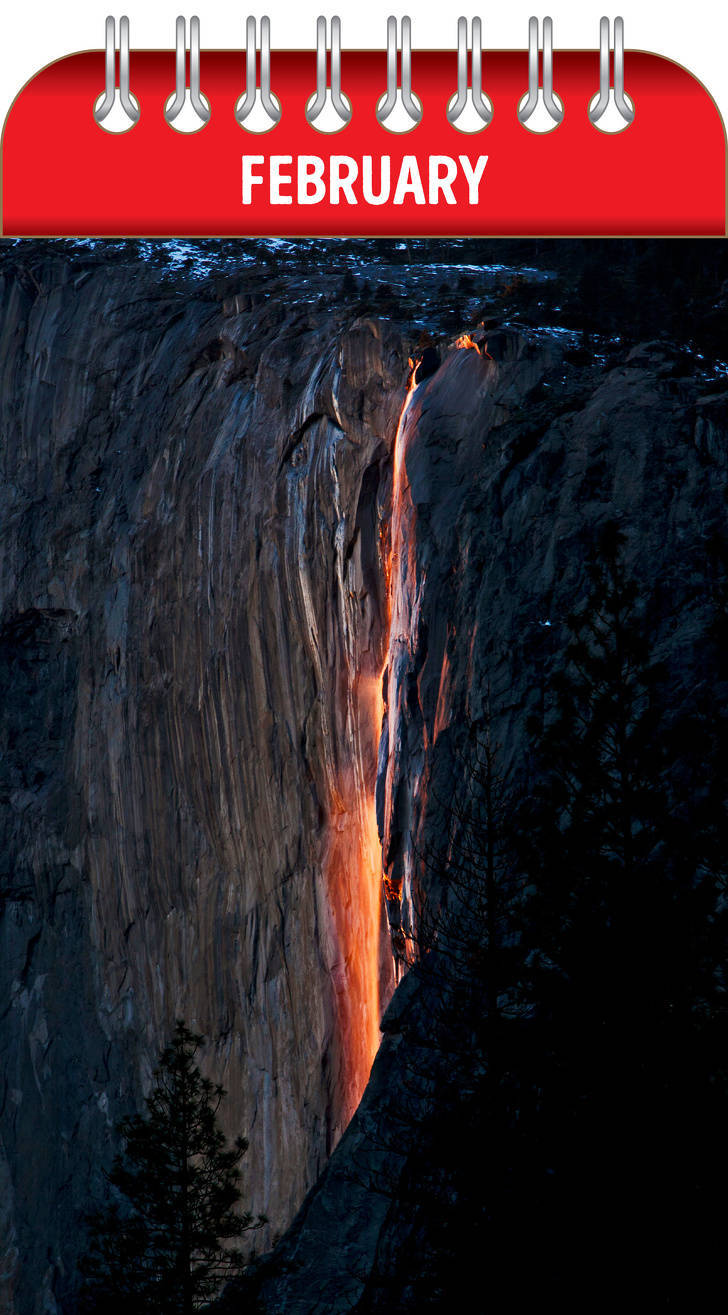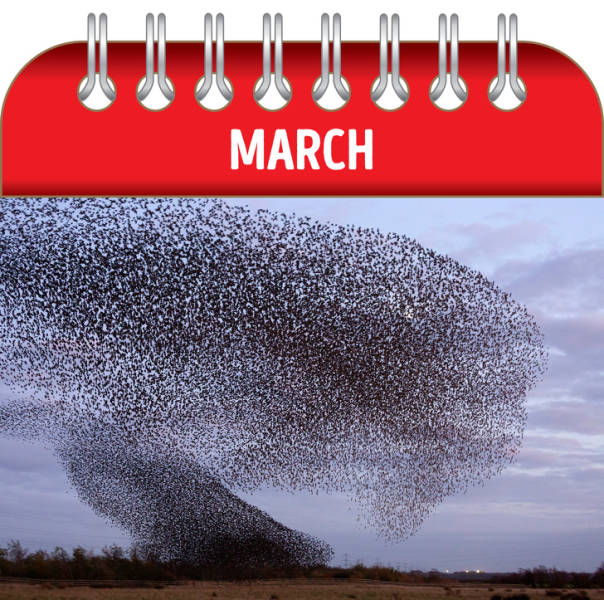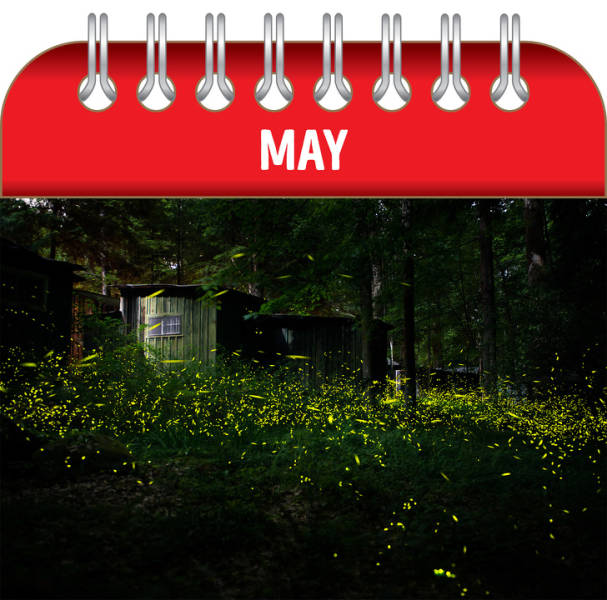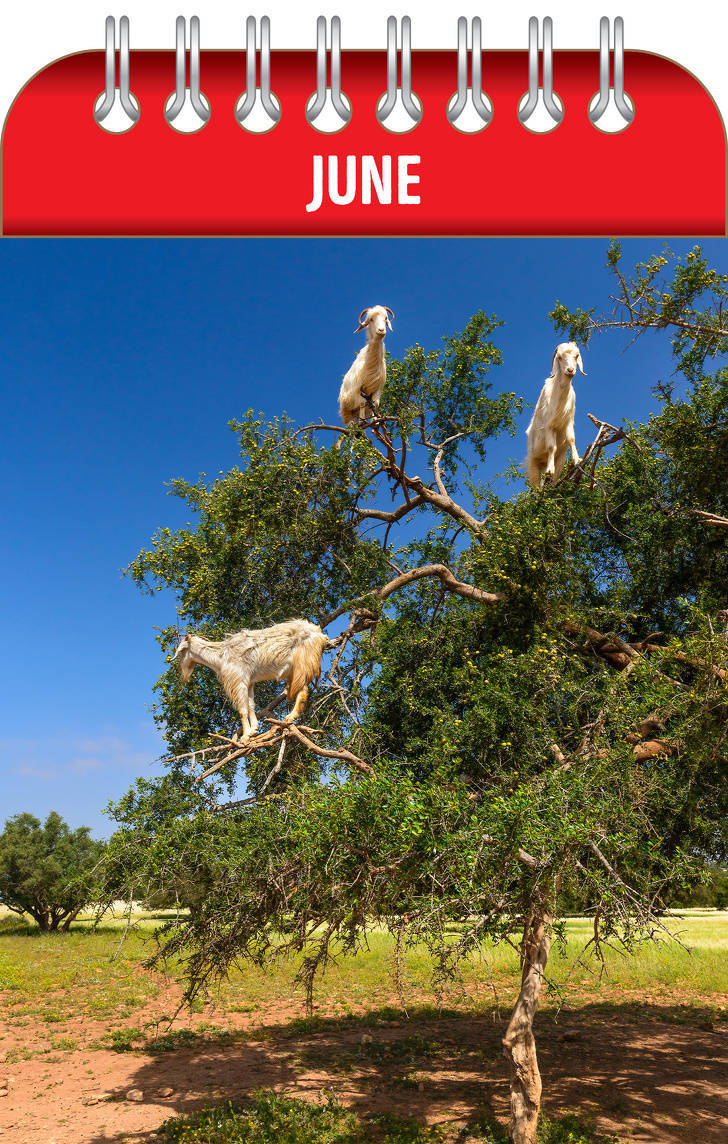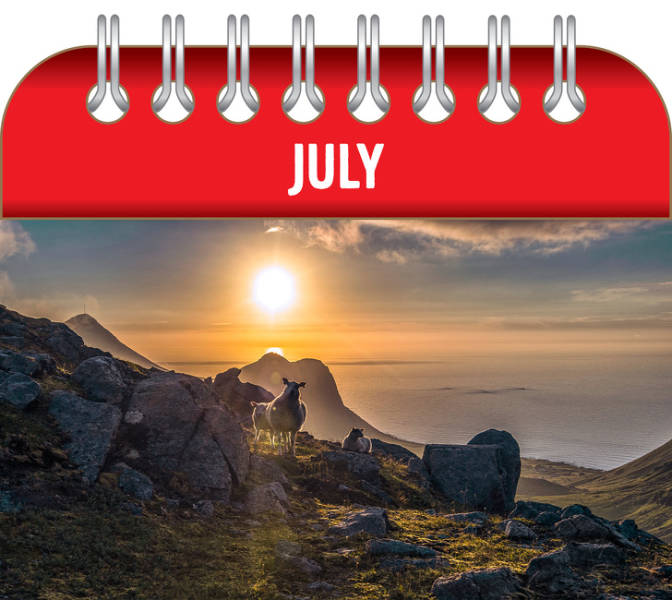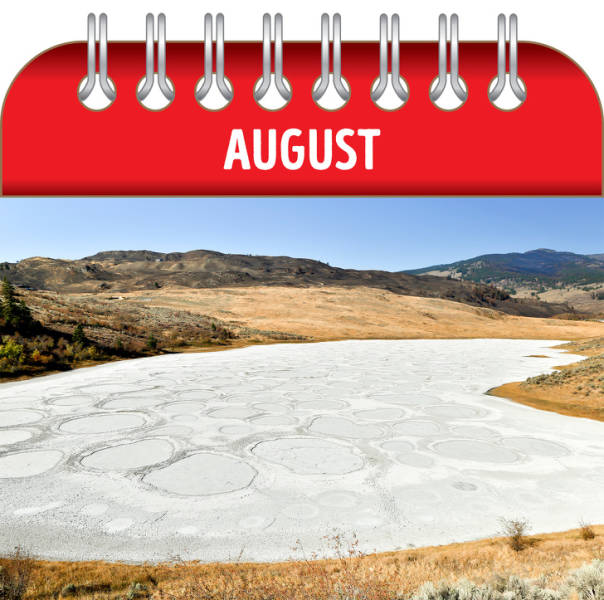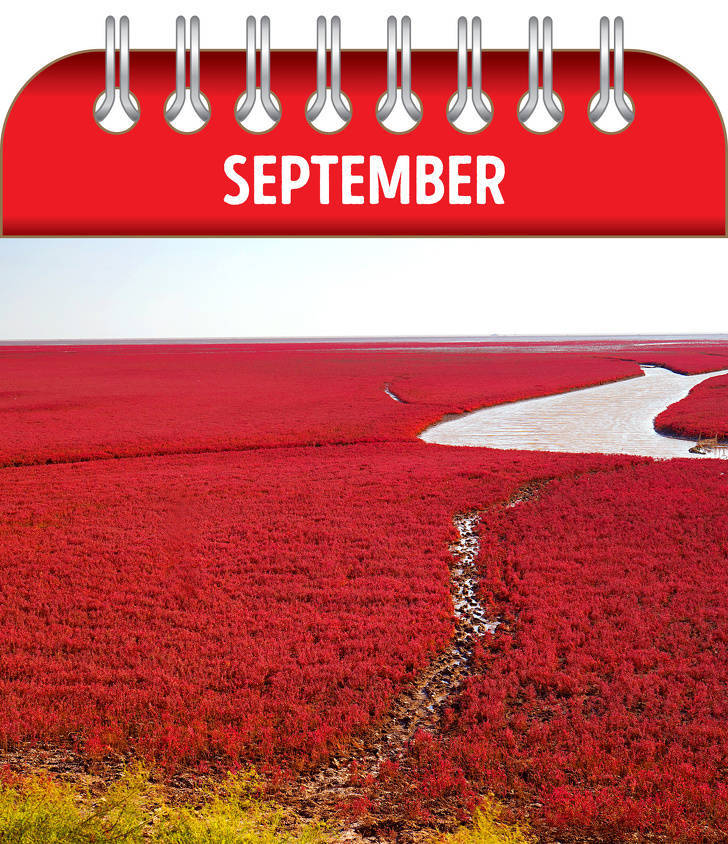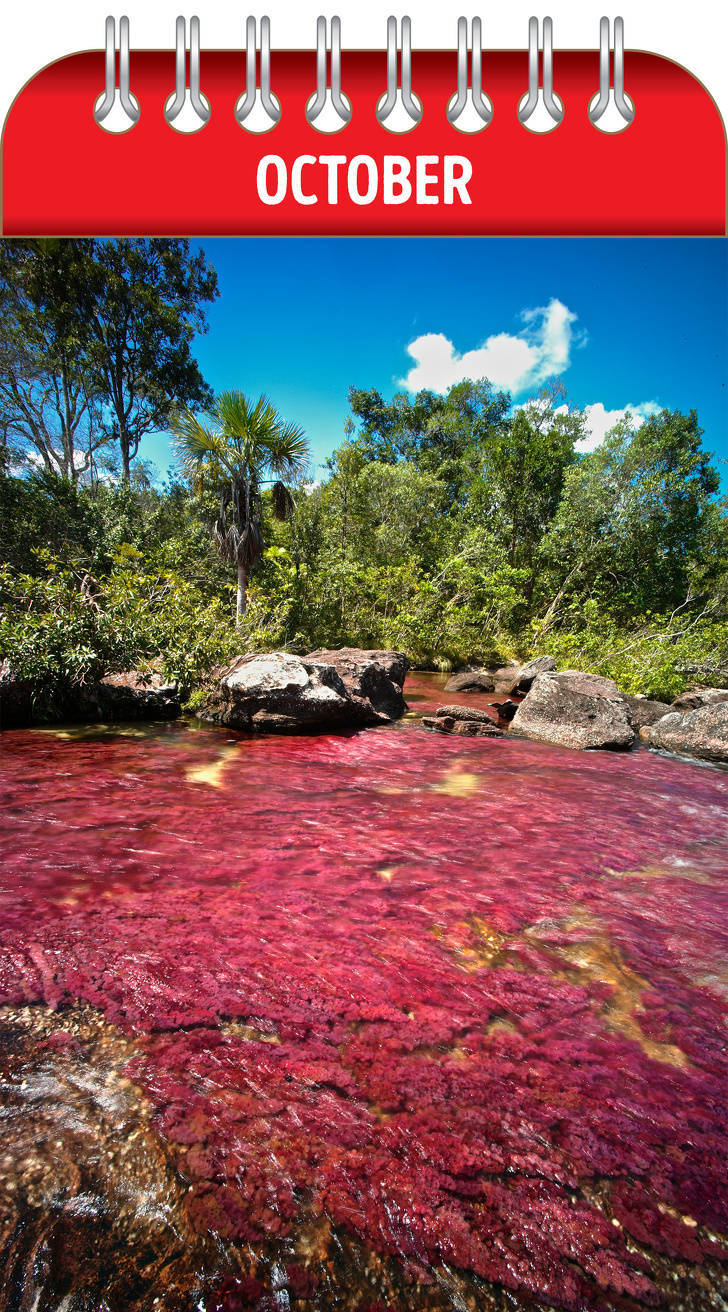January: Frozen bubbles under Lake Abraham
What: In summer Lake Abraham looks just like any other lake on our planet. What you can see here in winter, however, is pure magic. The bacteria living at the bottom of the lake emit large amounts of methane gas, that freezes into pillars of ovals under the lake’s crystal clear surface.
Where: Lake Abraham, Alberta, Canada
When: December — February
February: Yosemite Horsetail Firefall
What: We all know waterfalls, and many of us have seen them. But how about firefalls? They do exist too. Well, at least one of them, located in Yosemite National Park. In late February the rays of the setting sun have just the right angle to illuminate Horsetail Fall in such a way that it seems that it’s not water, but fire falling down the mountain.
Where: Yosemite Valley, Yosemite National Park, California, USA
When: second half of February
March: Starling murmurations
What: Starlings gather in flocks of incredible sizes and perform amazing mass air tricks. They dive and rise in unison, as if they were one huge organism, not a thousand separate birds. According to experts, starlings gather into these amazing formations to exchange information and to mislead predators with their hypnotizing movements.
Where: across the UK
When: January — March
April: Wisteria blooming
What: You’ve probably heard about Japanese Cherry Blossom festivals, but this is not the only flower whose blooming season means something for the Japanese. During one month in the spring you can enjoy walking through magical Wisteria tunnels formed by hundreds of plants, whose colors vary from red and purple to yellow and white. If you want to see a fairytale with your own eyes, this is just what you are looking for.
Where: across Japan
When: mid-April — mid-May
May: Synchronous fireflies
What: Synchronous fireflies can only be found in a few places on our planet, which turns watching them into a real adventure. During their mating display, thousands of fireflies gather into a sparkling display and flash simultaneously every few seconds.
Where: Great Smoky Mountains National Park, USA
When: May — June
June: Climbing goats
What: Goats climbing trees looks somewhat surreal, but this bizarre natural phenomenon has a logical explanation. The trees that these goats climb are not random, they are argan tress, whose fruits ripen around June. Hungry goats are attracted by this food and you can sometimes see a dozen of them hanging out on one tree.
Where: Morocco
When: June
July: Midnight sun
What: The midnight sun is a fantastic phenomenon you can see during the summers anywhere that is south of the Antarctic Circle and the north of the Arctic Circle, and Norway is one of the places that you can enjoy it. The axis of the Earth’s rotation is tilted, which causes the North Pole to be angled toward the sun in the summer. It creates an amazing effect that you can only see in this area — for several weeks in summer, the sun never sets.
Where: Norway
When: June — August
August: Spotted Lake Osoyoos
What: In summer months, when the temperature is hot, this lake changes its colors and even its shape. As the water evaporates, we can see multi-colored circle formations of salt and other minerals on the bottom of the lake, which makes it all look like the pattern of leopard skin. In the heat of the summer season the lake can become completely white.
Where: British Columbia, Canada
When: July — August
September: Yuncheng Salt Lake
What: The waters of this Chinese lake can show the full spectrum of colors from green and yellow to scarlet and magenta. It all happens thanks to a wide range of algae that blooms in the lake. The lake always looks spectacular, but the best period to see it is in autumn, when the colors are their brightest.
Where: Yuncheng, China
When: September — October
October: The liquid rainbow of Cano Cristales
What: Here’s another breathtaking view that is caused by algae blooming. Cano Cristales is a river in Colombia that looks like a liquid rainbow which can display a wide range of colors from green and red to blue and black. You can admire this this view from May to December, but the brightest colors can be seen in autumn.
Where: Colombia
When: October — November
November: Flowering Atacama Desert
What: Sand, sand everywhere. This is what the majority of us imagine when we hear the word “desert.” This is not true about all deserts, however, and the Atacama desert is one of them. Even though this place is extremely dry, it can turn into a flowering blanket overnight after a heavy rain. Note, however, that the desert blooms only every 4 or 5 years, and last time it happened in 2017.
Where: Chile
When: September — November
December: Sailing stones
What: Rocks in Death Valley occasionally seem to slide across the deserted area on their own, with no power applied and no ropes attached. How does this happen? The sailing rocks have been studied since the 1900s and scientists believe that the strange movements of these stones are the result of a perfect balance of water, ice, and wind that occurs in the winter months. Thin sheets of ice form under the stones and push them forward, when even a light wind appears.
Where: Death Valley, California, USA
When: December — February


